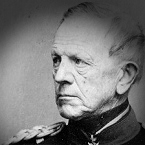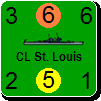Kel
Posts: 229
Joined: 12/17/2010
Status: offline

|
Generally speaking, I could achieve the three strategic objectives of the first season of campaigning:
In the north, Leningrad is well protected and the Luga river is not crossed
In the center, I could stop the panzers between Smolensk and the Vyazma line
In the south, after tremendous pockets on the Dnepr, I could buy time time and stall the advance East of the Dnepr but well West of Karkov: the manpower centers of Ukraine are saved.
Of course, the price to pay for this achievement is that the Red Army is completely exhausted. Pockets have destroyed huge numbers of combat formations, but few HQs. Almost all frontline divisions are unready, depleted. The airforce is preserved (I basically spent the autumn moving it eastward with the occasional paradrop of supply to lengthen by one week the lifespan of surrounded combat formations).
WINTER SEASON
So, the general situation is quite in our favor from a strategic and geographic point of view (more territory and manpower was preserved that I could hope for) but extremely fragile on a military point of view (the armies are hodge podges of remnants, some commands are overloaded, all TOEs are depleted, and the leadership is not very coherent). Loads of APs will be needed over an extended period of time.
Considering this situation, and knowing that our german opponent would avoid a risky confrontation in winter, I gave our forces two major objectives :
1/ Have a combat-capable Red Army and Airforce ready for the spring campaign.
2/ Optimize the frontline.
To fulfill these goals, after careful considerations, I chose NOT to develop a winter offensive (with what aims? I do not need to reconquer vital territories since I have not lost much) and I fear that a winter offensive would deplete the soviet force and that the German would be able to catch us flat footed - strategically repeating operational mistakes such as the Barvenkovo-Lozovaya operation.
I recognize that this choice is an unconventional one, and that, by doing this, I choose a path not yet travelled, open a strategic option that goes against received wisdom and face long-term consequences that are not clear at all. I will add that the occasional probes I made revealed that the enemy seem to have evacuated the combat zone. Apparently he choose to create a no man's land between our armies. So, let it be.
Back to the map:
When mud hits and the German starts to withdraw to his winter positions, the frontline has one major indentation (west of Rzhev) and one major salient (west of Kursk). Here is a general view. In the next posts, I will give more details and regional views.

 Attachment (1) Attachment (1)
< Message edited by Kelblau -- 2/6/2011 10:28:43 PM >
|
 Printable Version
Printable Version
























 .
. 

 New Messages
New Messages No New Messages
No New Messages Hot Topic w/ New Messages
Hot Topic w/ New Messages Hot Topic w/o New Messages
Hot Topic w/o New Messages Locked w/ New Messages
Locked w/ New Messages Locked w/o New Messages
Locked w/o New Messages Post New Thread
Post New Thread